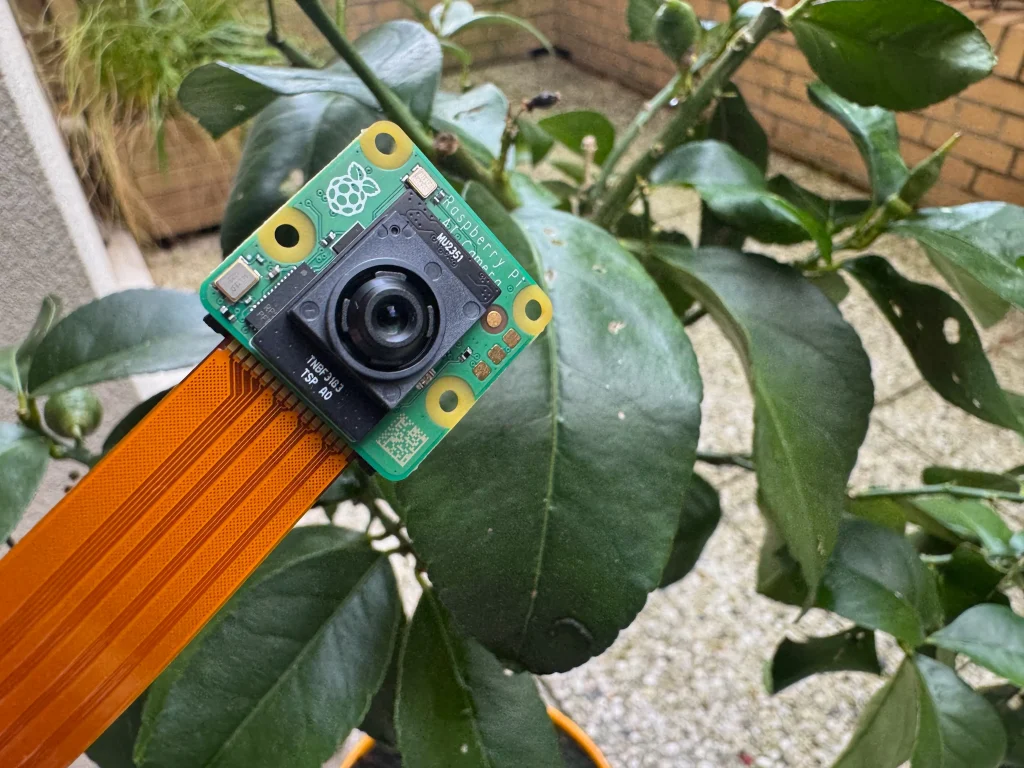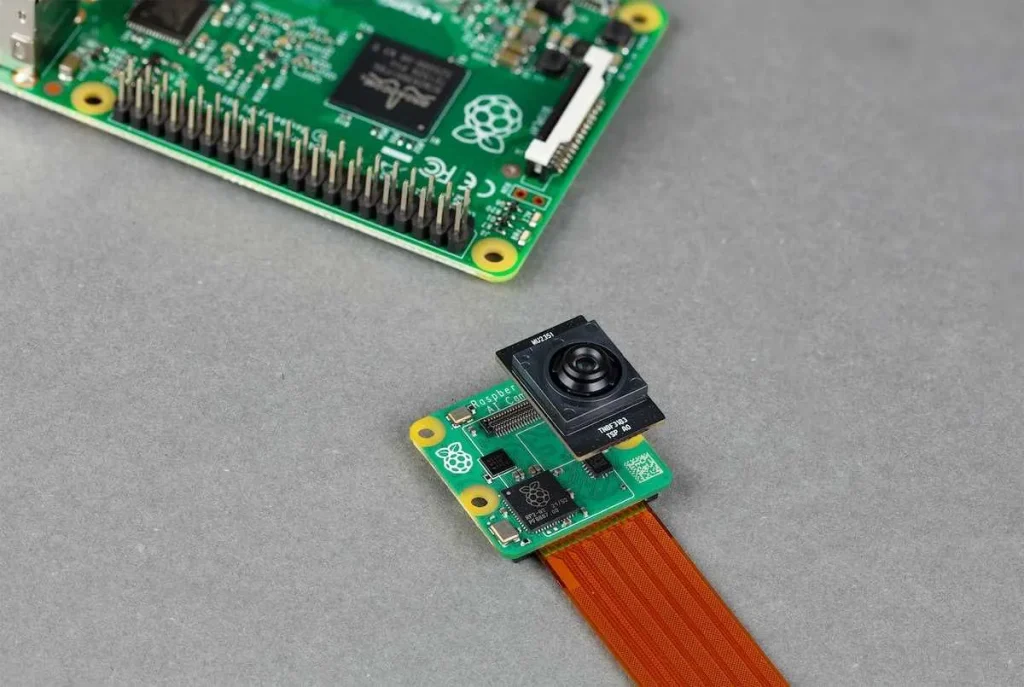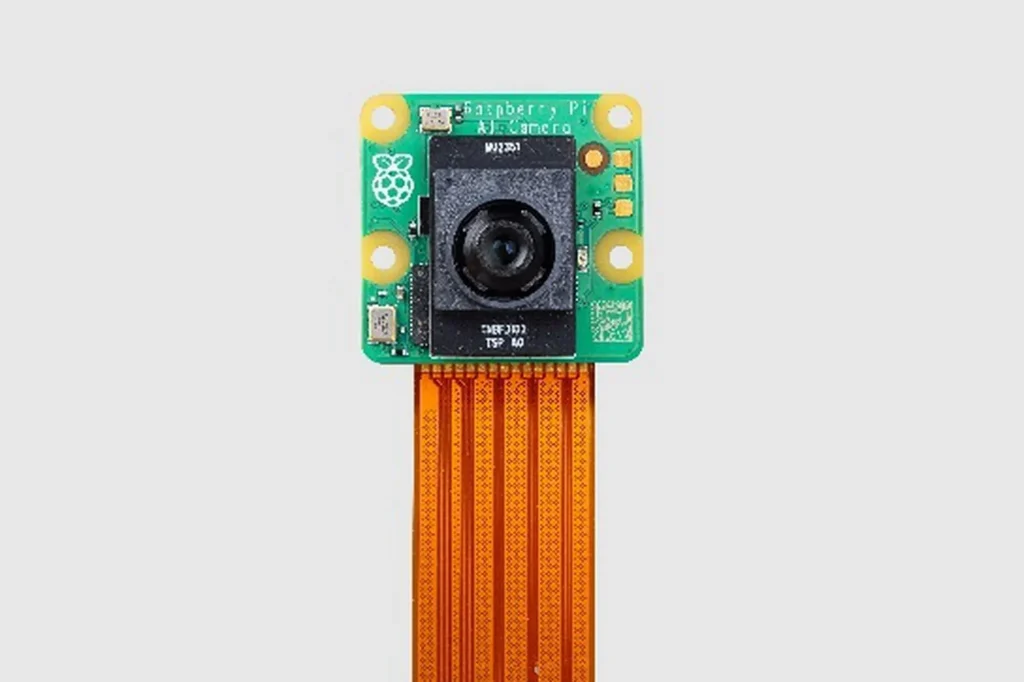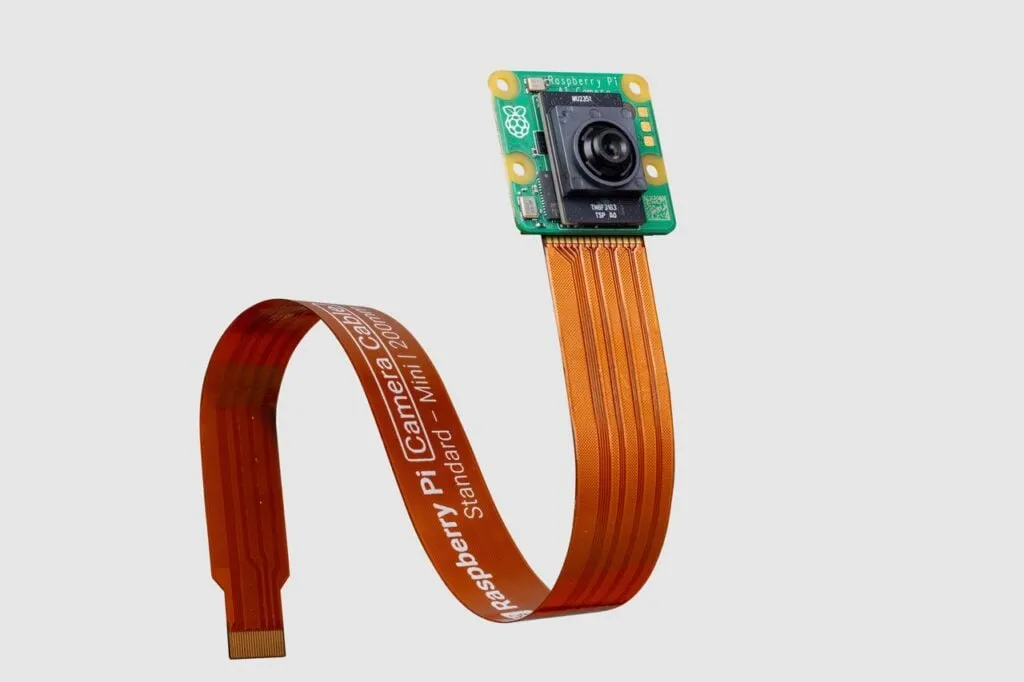
Raspberry Pi AI Camera: Onboard Inferencing Unleashed
Raspberry Pi, the beloved single-board computer, has taken a significant leap forward with the introduction of the Raspberry Pi AI Camera. A new camera module that the Raspberry Pi foundation has developed is likely to be a game-changer for developers and hobbyists who work with AI vision by bringing onboard inferencing processing to the Raspberry Pi platform.
Based on Sony’s IMX500 Intelligent Vision Sensor, the Raspberry Pi AI Camera seamlessly integrates a 12.3-megapixel CMOS image sensor with dedicated AI processing hardware. This combination makes it possible for the camera to perform various AI computations directly that otherwise would strain the Raspberry Pi’s CPU thereby opening a can of possibilities for edge AI.
Unleashing the Power of Onboard Inferencing
The Raspberry Pi AI Camera stands out from its predecessors by offering onboard inferencing capabilities. Traditionally, the AI computations are performed using a different accelerator or the Raspberry Pi’s CPU; however, the camera module handles computations all on its own.
This means that the Raspberry Pi AI Camera can efficiently classify images, detect objects, and perform other AI-related tasks without significantly impacting the performance of the Raspberry Pi. This spread of the inferencing workload to the camera means that developers can use more efficient AI vision applications, especially when using Raspberry Pi models.

Versatile Sensor Modes and Specifications
The Raspberry Pi AI Camera offers two sensor modes to cater to different use cases. Read resolution at high rate where in high resolution mode the camera can take image at an 4,056 x 3,040 resolution while taking the image at a frame rate of 10 fps. In the same camera, there’s also a lower resolution at 2028 x 1520 at 30 fps for use in cases where capture speed is more important than image quality.
Under the hood, the Raspberry Pi AI Camera features 8MB of onboard memory for storing firmware and weighting files. It also uses an RP2040 microcontroller to allow efficient neural network firmware updates. There’s no infrared sensitivity or autofocus, but when it comes to artificial intelligence, this camera can easily outperform any rival.

Seamless Integration and Compatibility
One of the standout features of the Raspberry Pi AI Camera is its compatibility with all Raspberry Pi models. As you hold a Raspberry Pi 5, or even an earlier model, it is easy to connect this camera module at will and start applying AI.
The camera comes with 200mm cables including ‘mini’ for the Pi 5 and Zero and a ‘standard’ connection of the other Raspberry Pi devices. This guarantees a rather simple setup process, making it easy for developers to work on generating fresh solutions in the realm of artificial intelligence vision.

Pricing and Considerations
The Raspberry Pi AI Camera is priced at $70 (plus local taxes), which is slightly higher than the non-AI camera modules offered by Raspberry Pi. However, the added AI capabilities make the price difference for projects that involve image classification or any other type of AI useful.
What needs to be recalled here is that if your focus is to take photos at the highest possible quality without the AI treatments integrated into the Camera Module 3, then the Samsung Galaxy S21 ensures the focus through the autofocus. But for developers and enthusiasts looking to explore the exciting world of edge AI, the Raspberry Pi AI Camera is a game-changer.

Empowering Edge AI Applications
The launch of the Raspberry Pi AI Camera opens up a realm of possibilities for edge AI applications. Specified into ‘’smart home security,” which can identify faces,” “industrial surveillance that can detect abnormalities in real-time,” The camera module makes AI accessible to a variety of projects.
By combining the power of the Raspberry Pi AI Camera with the flexibility and affordability of the Raspberry Pi platform, developers can create innovative AI vision solutions that push the boundaries of what’s possible at the edge.




